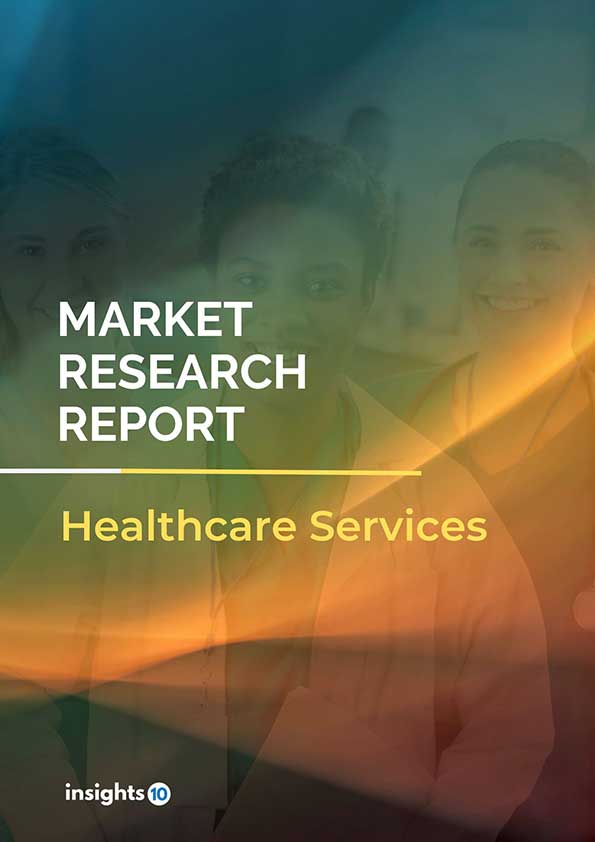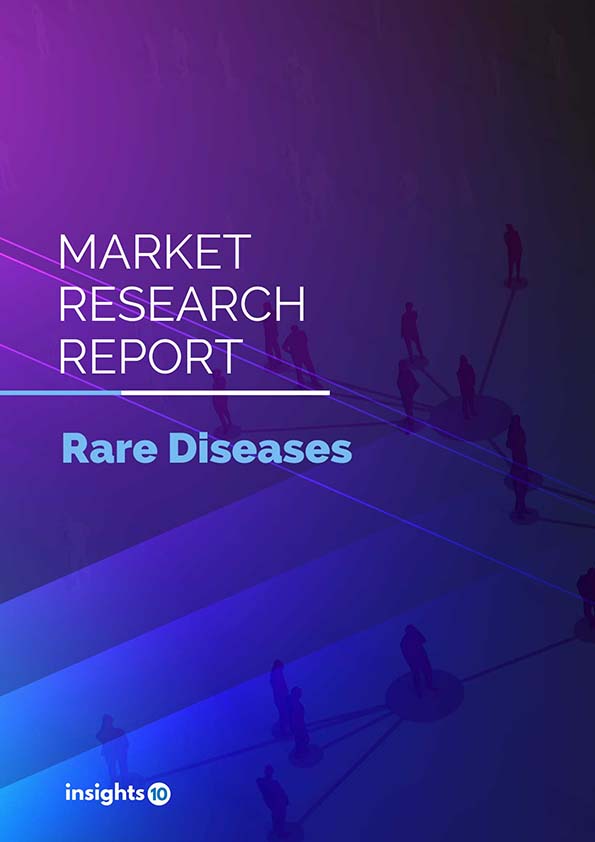Australia Artificial Intelligence (AI) in Medical Imaging Market Analysis
Australia artificial intelligence (AI) in medical Imaging market size was valued at $18 Mn in 2022 and is estimated to expand at a compound annual growth rate (CAGR) of 36.9% from 2022 to 2030 and will reach $222 Mn. The market is segmented by AI technology, solution, modality, application, and end User. Due to rowing demand for advanced healthcare solutions, the demand for AI in medical imaging is rising across the Australia market. Some of the key players in this market are Harrison.ai (AUS), MaxQ AI (AUS), LBT Innovations (AUS), 4Dx Limited (AUS), Oneview Healthcare (AUS), Siemens Healthineers, GE Healthcare, Philips Healthcare, Fujifilm Holdings Corporation, Canon Medical Systems Australia, and others.
Buy Now

Australia Artificial Intelligence (AI) in Medical Imaging
Market Executive Summary
Australia artificial intelligence (AI) in medical Imaging market size was valued at $18 Mn in 2022 and is estimated to expand at a compound annual growth rate (CAGR) of 36.9% from 2022 to 2030 and will reach $ 222. According to a report by the Australian Institute of Health and Welfare (AIHW), the total health expenditure in Australia for 2019-2020 was approximately $130.04 Bn. However, it is not specified how much of this expenditure was specifically for AI technology in medical imaging. AI in medical imaging is a growing field in Australia, with increased adoption of AI technologies in various medical imaging applications such as radiology, cardiology, and oncology. The demand for AI in medical imaging is driven by factors such as the increasing burden of chronic diseases, the aging population, and the need for more efficient and accurate diagnostic tools.
Artificial Intelligence (AI) in Medical Imaging in Australia has various demand and applications in different regions. For instance, the use of AI in medical imaging is widely accepted and implemented in the healthcare sector of NSW. It is being used in areas such as breast cancer screening, the detection of lung cancer, and brain imaging. AI is also being used to enhance the accuracy and speed of diagnosis and treatment planning.
In Addition, In Victoria, AI is being used in medical imaging for the detection and diagnosis of various diseases such as prostate cancer, breast cancer, and skin cancer. It is also being used to improve the quality and efficiency of radiology services. AI in medical imaging is being used in Queensland for the early detection of diseases such as lung cancer, liver cancer, and brain tumors. It is also being used to improve the accuracy of mammography and breast screening. Moreover, in Western Australia, AI in medical imaging is being used for the detection and diagnosis of various diseases such as lung cancer, prostate cancer, and breast cancer. It is also being used to improve the efficiency and accuracy of radiology services.
In South Australia, for the early detection and diagnosis of various diseases such as lung cancer, breast cancer, and prostate cancer AI is being used. It is also being used to improve the accuracy and speed of diagnosis and treatment planning. Overall, AI in medical imaging is gaining popularity and acceptance in various regions of Australia due to its potential to improve the accuracy and efficiency of diagnosis and treatment planning., AI in medical imaging is gaining popularity and acceptance in various regions of Australia due to its potential to improve the accuracy and efficiency of diagnosis and treatment planning. Hence, the demand for AI in medical imaging will increase during the forecast peiod.

Market Dynamics
Market Growth Drivers
- Growing demand for advanced healthcare solutions: With an aging population and rising prevalence of chronic diseases, there is a growing demand for advanced healthcare solutions in Australia. AI in medical imaging can help improve the accuracy and speed of diagnoses, and assist healthcare professionals in providing better patient care.
- Increasing investments in healthcare technology: The Australian government has been making significant investments in healthcare technology, which is driving the growth of the AI in the medical imaging market. The government has introduced initiatives such as the Medical Research Future Fund (MRFF) to encourage research and development in healthcare technology.
- Rise in healthcare expenditure: Healthcare expenditure in Australia has been increasing consistently. The increasing expenditure in healthcare indicates a growing need for innovative healthcare solutions, including AI in medical imaging.
Market restraints:
- Limited healthcare budget: Despite the increasing healthcare expenditure in Australia, the healthcare budget is still limited. This can hinder the adoption of AI in medical imaging solutions, as they can be expensive.
- Lack of awareness and expertise: AI in medical imaging is a relatively new technology in Australia, and there is a lack of awareness and expertise in the field. This can pose a challenge in the adoption and implementation of AI in medical imaging solutions.
- Regulatory challenges: The regulatory framework for AI in medical imaging is still evolving in Australia, which can pose challenges for companies operating in the market. There is a need for clear guidelines and regulations to ensure the safety and efficacy of AI in medical imaging solutions.
Competitive Landscape
Key Players
- Harrison.ai (AUS)
- MaxQ AI (AUS)
- LBT Innovations (AUS)
- 4Dx Limited (AUS)
- Oneview Healthcare (AUS)
- Siemens Healthineers
- GE Healthcare
- Philips Healthcare
- Fujifilm Holdings Corporation
- Canon Medical Systems Australia
Recent Developments
February 2021: the Australian government announced a new funding initiative of AUD 45 million to support the development and adoption of new AI technologies in healthcare, including medical imaging.
August 2021: an Australian health tech startup called Harrison.ai secured a funding of AUD 129 million to expand its AI capabilities in medical imaging and healthcare analytics.
September 2021: researchers at the University of Queensland in Australia developed a new AI tool that can detect and classify skin lesions in medical images with high accuracy, potentially aiding in the early detection of skin cancer.
November 2021: the Australian government announced a new national data strategy to improve data sharing and integration across the healthcare system, which could facilitate the use of AI in medical imaging and other areas of healthcare.
December 2021: Australian medical imaging company I-MED Radiology Network partnered with AI firm VUNO to launch a new AI-powered tool for detecting lung cancer in medical images, which is expected to improve diagnostic accuracy and patient outcomes.
Healthcare Policies and Regulatory Landscape
The Therapeutic Goods Administration (TGA), which is part of the Australian Government Department of Health, is responsible for regulating medical devices and pharmaceuticals in Australia. The TGA requires that all medical devices, including those that incorporate AI or machine learning technologies, undergo a rigorous process of testing and certification before they can be marketed and sold in Australia. Medical devices must also comply with the Essential Principles of Safety and Performance, which are set out in the Therapeutic Goods (Medical Devices) Regulations 2002.
In addition, the Australian Privacy Principles (APPs) apply to the use of personal data in healthcare, including data used in medical imaging. The APPs establish rules for the collection, use, and storage of personal data, including requirements for informed consent, data security, and the right to access and correct personal data.
Furthermore, the Australian Medical Association (AMA) has issued guidelines for the use of AI in healthcare, including medical imaging. The guidelines recommend that AI technologies should undergo rigorous testing and evaluation before being used in clinical practice, and that healthcare professionals should be trained in the use of these technologies. Overall, while there are no specific regulations in Australia that address the use of AI in medical imaging, healthcare providers and medical device manufacturers must comply with TGA regulations and the APPs when developing and implementing AI technologies in healthcare. It is also important to note that regulations and policies are subject to change over time, and healthcare professionals and industry stakeholders should stay up-to-date on any new developments or updates to existing regulations.
1. Executive Summary
1.1 Digital Health Overview
1.2 Global Scenario
1.3 Country Overview
1.4 Healthcare Scenario in Country
1.5 Digital Health Policy in Country
1.6 Recent Developments in the Country
2. Market Size and Forecasting
2.1 Market Size (With Excel and Methodology)
2.2 Market Segmentation (Check all Segments in Segmentation Section)
3. Market Dynamics
3.1 Market Drivers
3.2 Market Restraints
4. Competitive Landscape
4.1 Major Market Share
4.2 Key Company Profile (Check all Companies in the Summary Section)
4.2.1 Company
4.2.1.1 Overview
4.2.1.2 Product Applications and Services
4.2.1.3 Recent Developments
4.2.1.4 Partnerships Ecosystem
4.2.1.5 Financials (Based on Availability)
5. Reimbursement Scenario
5.1 Reimbursement Regulation
5.2 Reimbursement Process for Diagnosis
5.3 Reimbursement Process for Treatment
6. Methodology and Scope
Artificial Intelligence (AI) in Medical Imaging Market Segmentation
By AI Technology
- Deep Learning
- Natural Language Processing (NLP)
- Others
By Solution
- Software Tools/ Platform
- Services
- Integration
- Deployment
By Modality
When compared to CT scans, magnetic resonance imaging can produce pictures that are free of imperfections. Due to its efficiency in obtaining details and better-quality pictures of soft tissues, the MRI is frequently seen as a superior alternative to X-rays. Utilizing optical coherence tomography, three-dimensional interactions between the retina and membranes are made possible in order to control the vitreoretinal disease.
- CT Scan
- MRI
- X-rays
- Ultrasound Imaging
- Nuclear Imaging
By Application
The market is dominated by the digital pathology segment, which can be linked to pathologists' rising productivity. A validation tool for image analytics is provided by digital pathology, helping pathologists process more slides in less time. This facilitates early illness identification and quicker therapy initiation. AI and digital pathology also assist doctors in making patient-centered decisions. The oncology market is also expected to grow in popularity as more individuals become aware of cancer and its increased incidence in the public. Personalized therapy is made possible by artificial intelligence algorithms that identify and comprehend the nature of malignancies. The second section focUses on AI-driven diagnostic imaging for the heart, brain, breast, and mouth.
- Digital Pathology
- Oncology
- Cardiovascular
- Neurology
- Lung (Respiratory System)
- Breast (Mammography)
- Liver (GI)
- Oral Diagnostics
- Other
By End Use
The market is dominated by the healthcare sector. This is becaUse hospitals are widely dispersed and accessible; hence, many patients like hospitals. The market for medical imaging AI is also anticipated to benefit from favorable reimbursement regulations. During the anticipated time, diagnostic centers are anticipated to grow in popularity. This may be attributable to elements including rising patient awareness and a desire for diagnostic procedures and tests, all of which are fueling the market's expansion. Due to its ease in providing high-quality medical facilities in remote places, particularly rural ones, the ambulatory category is expected to develop at a quicker CAGR throughout the projection period. The availability of qualified surgeons and a surplAustralia of the necessary equipment are contributing to the expansion of the hospital market. Government assistance in emerging nations is likely to boost hospital infrastructure and technologies throughout the forecast period, which is anticipated to caUse the hospital segment to see growth.
- Hospital and Healthcare Providers
- Patients
- Pharmaceuticals and Biotechnology Companies
- Healthcare Payers
- Others
Methodology for Database Creation
Our database offers a comprehensive list of healthcare centers, meticulously curated to provide detailed information on a wide range of specialties and services. It includes top-tier hospitals, clinics, and diagnostic facilities across 30 countries and 24 specialties, ensuring users can find the healthcare services they need.
Additionally, we provide a comprehensive list of Key Opinion Leaders (KOLs) based on your requirements. Our curated list captures various crucial aspects of the KOLs, offering more than just general information. Whether you're looking to boost brand awareness, drive engagement, or launch a new product, our extensive list of KOLs ensures you have the right experts by your side. Covering 30 countries and 36 specialties, our database guarantees access to the best KOLs in the healthcare industry, supporting strategic decisions and enhancing your initiatives.
How Do We Get It?
Our database is created and maintained through a combination of secondary and primary research methodologies.
1. Secondary Research
With many years of experience in the healthcare field, we have our own rich proprietary data from various past projects. This historical data serves as the foundation for our database. Our continuous process of gathering data involves:
- Analyzing historical proprietary data collected from multiple projects.
- Regularly updating our existing data sets with new findings and trends.
- Ensuring data consistency and accuracy through rigorous validation processes.
With extensive experience in the field, we have developed a proprietary GenAI-based technology that is uniquely tailored to our organization. This advanced technology enables us to scan a wide array of relevant information sources across the internet. Our data-gathering process includes:
- Searching through academic conferences, published research, citations, and social media platforms
- Collecting and compiling diverse data to build a comprehensive and detailed database
- Continuously updating our database with new information to ensure its relevance and accuracy
2. Primary Research
To complement and validate our secondary data, we engage in primary research through local tie-ups and partnerships. This process involves:
- Collaborating with local healthcare providers, hospitals, and clinics to gather real-time data.
- Conducting surveys, interviews, and field studies to collect fresh data directly from the source.
- Continuously refreshing our database to ensure that the information remains current and reliable.
- Validating secondary data through cross-referencing with primary data to ensure accuracy and relevance.
Combining Secondary and Primary Research
By integrating both secondary and primary research methodologies, we ensure that our database is comprehensive, accurate, and up-to-date. The combined process involves:
- Merging historical data from secondary research with real-time data from primary research.
- Conducting thorough data validation and cleansing to remove inconsistencies and errors.
- Organizing data into a structured format that is easily accessible and usable for various applications.
- Continuously monitoring and updating the database to reflect the latest developments and trends in the healthcare field.
Through this meticulous process, we create a final database tailored to each region and domain within the healthcare industry. This approach ensures that our clients receive reliable and relevant data, empowering them to make informed decisions and drive innovation in their respective fields.
To request a free sample copy of this report, please complete the form below.
We value your inquiry and offer free customization with every report to fulfil your exact research needs.









































